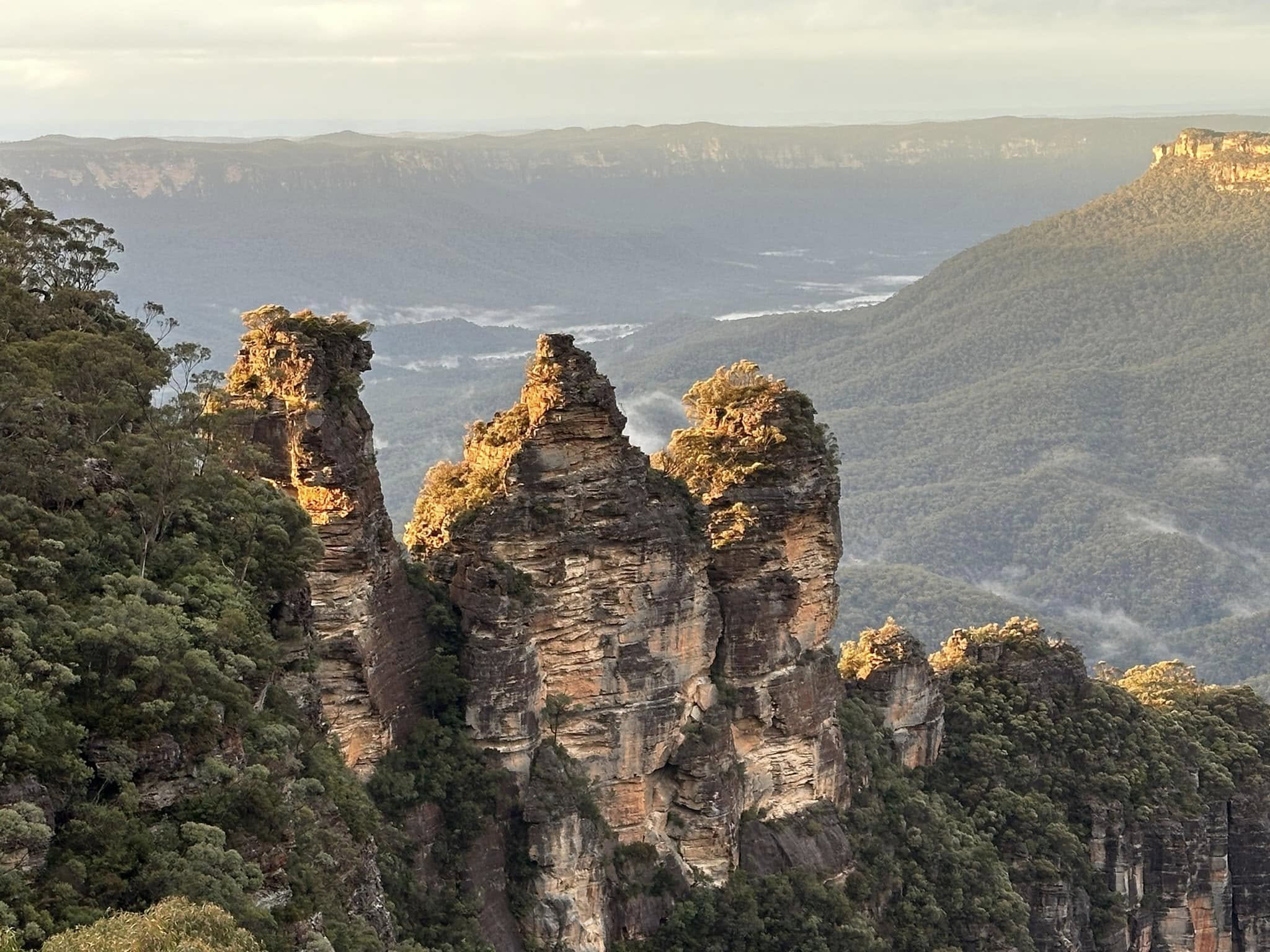Geography
The geography of the Blue Mountains of NSW is characterized by a sandstone plateau and escarpment landscape, with deep gorges, cliffs, and waterfalls, dominated by temperate eucalypt forests. The area is part of the Great Dividing Range and lies inland from Sydney, featuring significant biodiversity and a landscape shaped by millions of years of erosion and ancient volcanic activity. LANDFORMS Sandstone plateau: The region is primarily a vast sandstone plateau that drops dramatically at its edges into deep valleys and gorges. Gorges and cliffs: Millions of years of erosion have carved out numerous canyons, cliffs (some up to 300 meters high), and valleys like the Jamison Valley. Rivers and watersheds: The mountains act as a watershed for rivers like the Coxs, Grose, and Wolgan. Elevated areas: While much of the area is a maze of ridges and gorges, some parts have gentler topography, such as the Bindook Highlands, Boyd Plateau, and Newnes Plateau. GEOLOGY & ORIGIN Sandstone and shale: The landscape is primarily composed of sandstone, with layers of coal and shale visible in some cliffs, which were formed from ancient swamps and deltas. Volcanic activity: Ancient volcanic vents have created numerous volcanic features, and basalt lavas from later periods also cover parts of the landscape. Vegetation and biodiversity Eucalypt forests: The dominant vegetation is a temperate eucalypt forest, which covers over 10,000 km². High biodiversity: The area is noted for its exceptional biodiversity, supporting a vast number of eucalypt species and other plants, including many rare or threatened species. Diverse habitats: In addition to forests, the region includes a variety of habitats like woodlands, scrublands, grasslands, and swamps. Unique ecosystems: The landscape includes unique ecosystems such as hanging swamps that cling to cliff faces and rainforest remnants in waterfall spray zones. Significance World Heritage site: The Greater Blue Mountains Area is a UNESCO World Heritage property, recognized for its biodiversity and geological significance. Water supply: It is a crucial water source for Sydney and its surrounding areas. Recreation and tourism: The mountains are a major destination for recreation, hiking, and scenic viewing. Cultural heritage: The area has deep cultural significance for Aboriginal peoples and has a post-European-settlement history.
 en.wikipedia.orgbmnature.info
en.wikipedia.orgbmnature.info